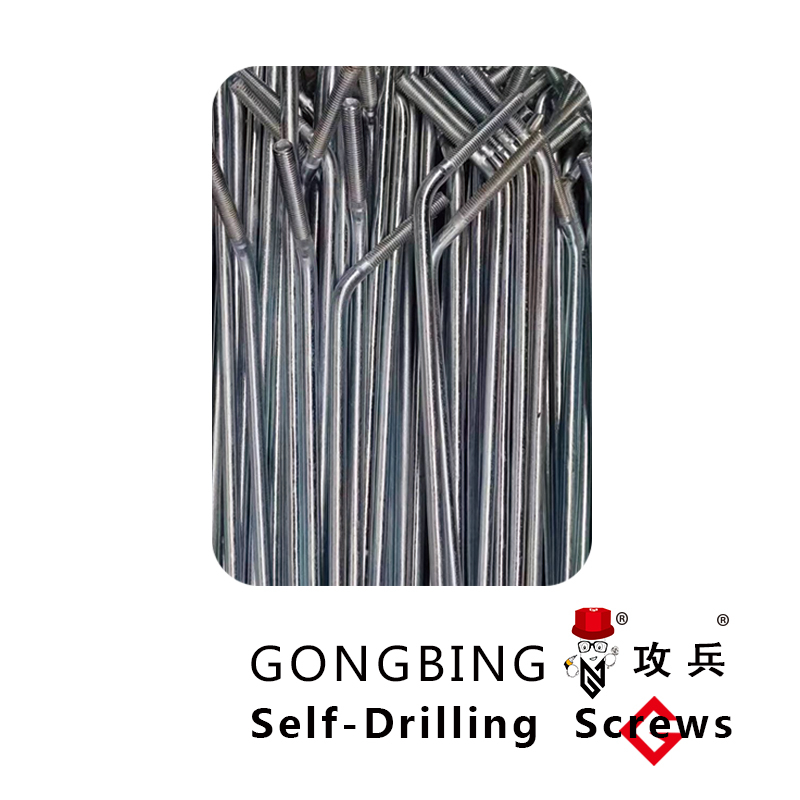anchor bolt wedge
Understanding Anchor Bolt Wedges A Key Component in Structural Integrity
Anchor bolts are essential components in construction and engineering, serving as the critical connection between structures and their foundations. In many applications, especially in seismic zones or high-stress environments, the performance of anchor bolts can be significantly enhanced by the use of wedges. This article will delve into the importance of anchor bolt wedges, their functionality, and considerations for their use.
What Are Anchor Bolt Wedges?
Anchor bolt wedges are mechanical devices designed to enhance the grip and holding capacity of anchor bolts within concrete or masonry structures. Typically made from high-strength materials, these wedges are inserted between the anchor bolt and the concrete. When tension is applied to the bolt, the wedge induces a clamping effect, improving the bond between the bolt and the substrate. This design maximizes the surface area in contact with the concrete, providing a more secure and robust anchorage.
The Importance of Wedges in Anchoring Systems
The integration of wedges in anchoring systems significantly optimizes their performance and reliability. In scenarios where load-bearing is paramount, such as in bridges, high-rise buildings, or heavy machinery installations, the stability provided by anchor bolt wedges is invaluable. Here are several critical reasons why wedges are vital
1. Enhanced Load Distribution Wedges distribute loads more evenly across the surface of the anchor bolt and the surrounding concrete. This distribution minimizes stress concentrations which can lead to cracking or failure.
2. Resistance to Pullout Forces The unique shape and design of the wedge create additional friction between the bolt and the concrete. This resistance to pullout forces makes anchoring systems safer and more durable, especially in dynamic environments.
3. Vibration Damping In structures exposed to seismic activity or heavy machinery vibration, wedges can help absorb and dampen vibrations, reducing the likelihood of loosening over time.
anchor bolt wedge

4. Ease of Installation Many anchor bolt wedges are designed for straightforward installation. They can easily be incorporated into existing anchoring systems, providing an efficient solution for enhancing structural integrity without significant retrofitting.
Considerations for Using Anchor Bolt Wedges
While the benefits of using anchor bolt wedges are significant, it is crucial to consider several factors to ensure their effectiveness
1. Material Compatibility The materials used for anchor bolts and wedges must be compatible with the surrounding structure to prevent galvanic corrosion and ensure long-term durability.
2. Load Capacity Assessments Engineers should conduct load capacity assessments before installing wedges to determine the appropriateness of the chosen anchoring system based on anticipated stresses.
3. Installation Precision Accurate installation is critical for wedges to perform their intended function. Any misalignment can lead to ineffective load distribution and decreased anchoring capacity.
4. Maintenance and Inspection Regular inspection and maintenance are essential to ensure that anchor bolt wedges remain effective. This may involve checking for signs of wear, corrosion, or loosening, particularly in harsh environments.
Conclusion
Anchor bolt wedges play a vital role in enhancing the performance and safety of anchoring systems in construction and engineering. Their ability to improve load distribution, resist pullout forces, and dampen vibrations makes them an indispensable component in ensuring the structural integrity of a wide range of applications. As with any engineering solution, careful consideration of material compatibility, load assessments, and installation techniques is essential for maximizing their effectiveness and longevity. Ultimately, the strategic use of anchor bolt wedges can contribute significantly to the overall safety and reliability of structures, ensuring they withstand the test of time and environmental challenges.
-
Weatherproof Plastic Expansion Anchors for OutdoorخبرونJun.06,2025
-
Sustainability in the Supply Chain: Eco-Friendly TEK Screws ProductionخبرونJun.06,2025
-
Load-Bearing Capacity of External Insulation FixingsخبرونJun.06,2025
-
Double Head Bolts: Enhancing Efficiency in Industrial MachineryخبرونJun.06,2025
-
Corrosion Resistance in Chipboard Screws: Coatings for Wholesale DurabilityخبرونJun.06,2025
-
Butterfly Toggle Bolts : Enhancing Structural ResilienceخبرونJun.06,2025
